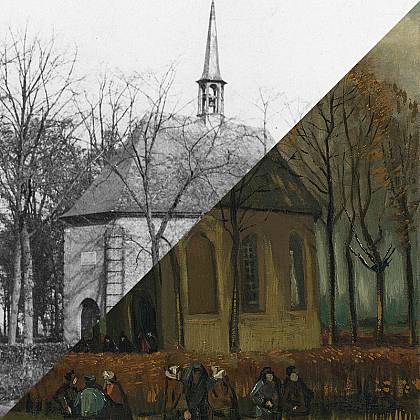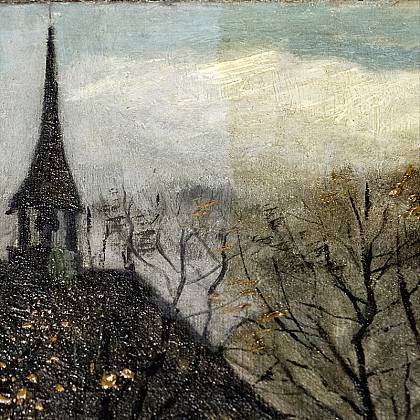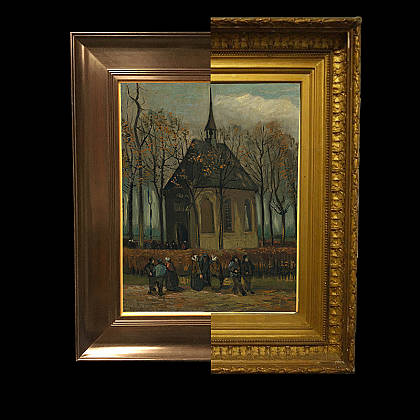Farmer
Congregation Leaving the Reformed Church in Nuenen
The x-ray of this painting shows that Van Gogh reworked it some time later. He painted a small group in the centre foreground over a farmer with a spade. He also added the churchgoers in front of the door, and the autumn leaves on the trees and bushes.
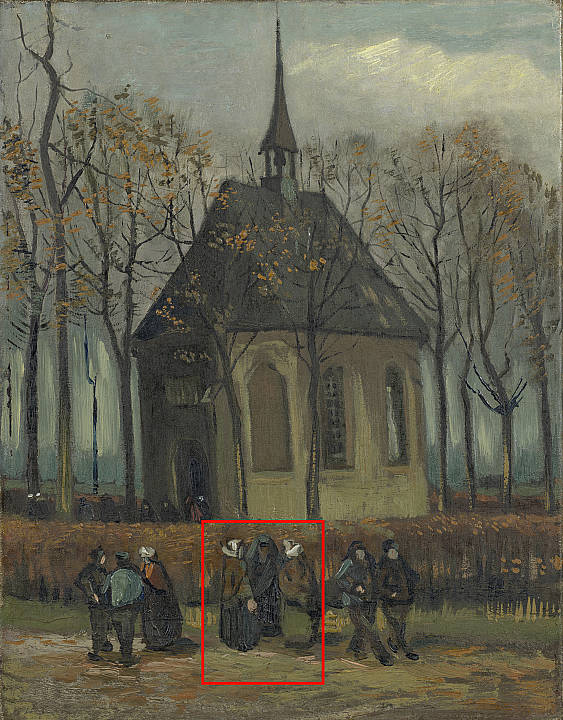
Congregation Leaving the Reformed Church in Nuenen, 1884-1885
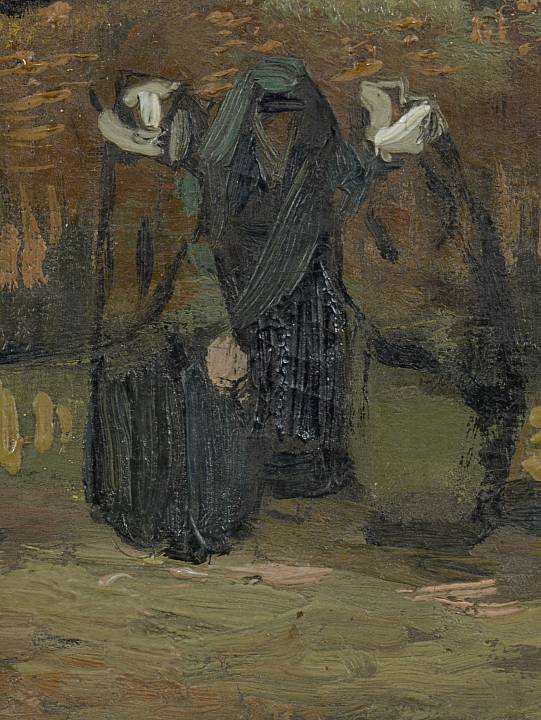
The blue jacket of the farmer with the spade can be seen through the scarf of the woman on the left (in the group in the centre foreground). Her hand is virtually identical to his.
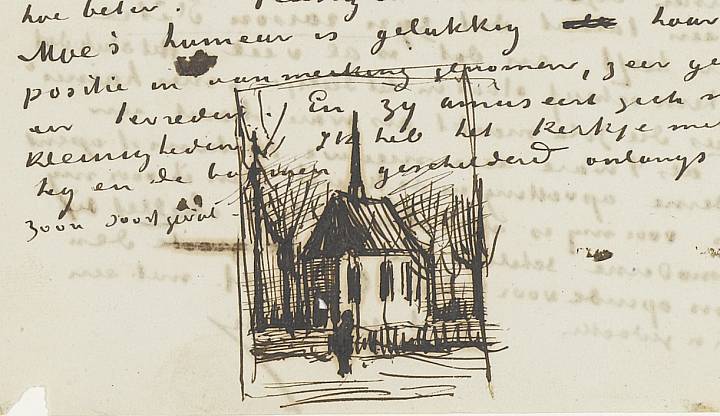
Vincent told his brother Theo about the painting he had made for his mother in a letter he wrote in early 1884, and he included a sketch. It shows what the painting looked like originally. There is a farmer in the centre foreground.
Letter to Theo van Gogh, Nuenen, c. 3 February 1884
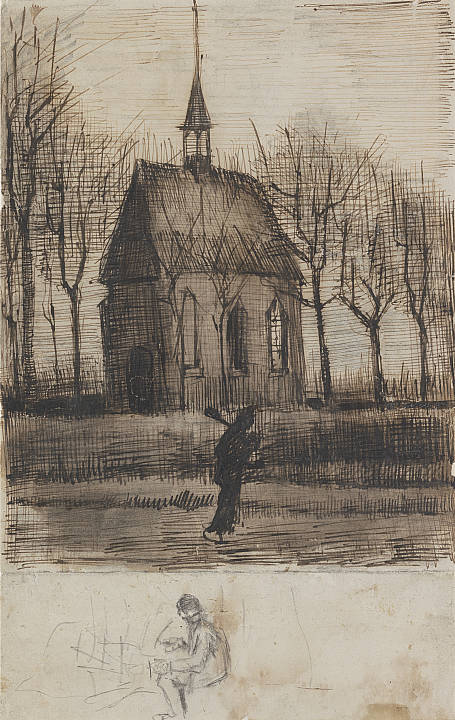
The farmer with the spade can also be seen in the pen and ink drawing that Van Gogh made of the church before he started to work on the painting.
Vincent van Gogh, The Reformed Church at Nuenen, 1884, pencil, pen and ink on paper, Kröller-Müller Museum, Otterlo
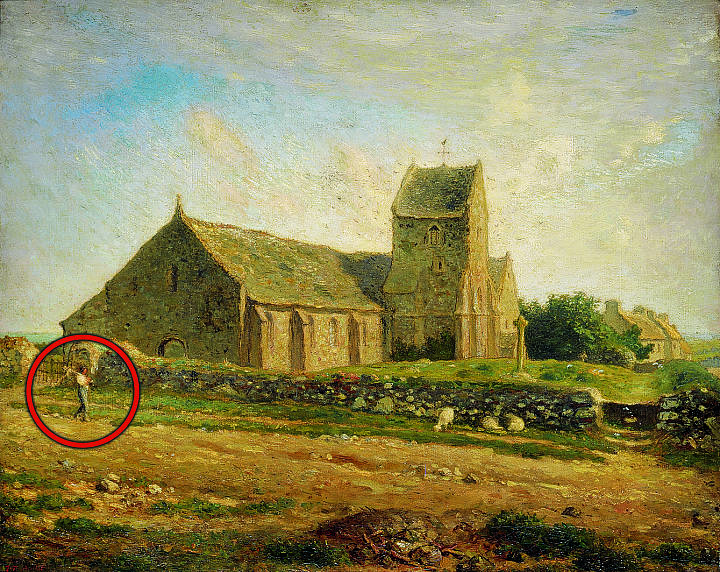
Van Gogh might have been inspired by this painting by his hero Jean-François Millet. His painting of a church in Greville also includes a farmer with a spade.
Jean-François Millet (1814-1875),
The Church at Gréville, 1871-1874
oil on canvas
© RMN-Grand Palais (Musée d'Orsay) / Hervé Lewandowski
Additions
Van Gogh used lighter colours for his additions. They are complementary colours which reinforce each other. The yellowy-orange of the autumn leaves goes well with the blue of the background, for example.
Researchers therefore believe that he made the changes just over eighteen months later, in autumn 1885. Until then, he rarely used colour combinations of that kind.
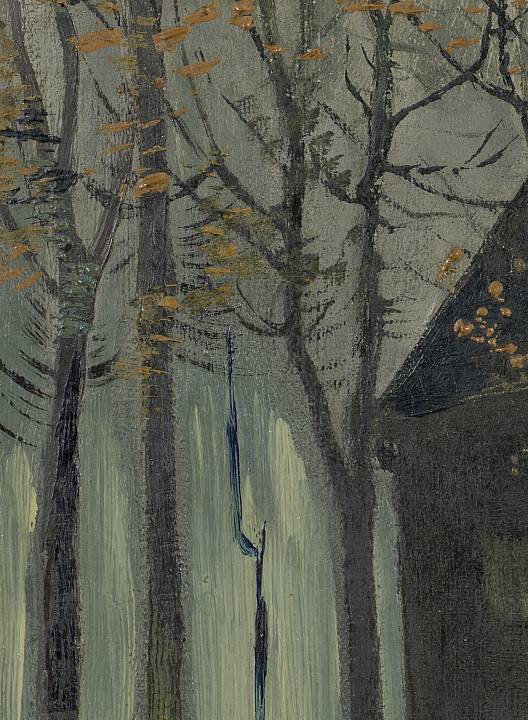
Detail: Van Gogh added the narrow blue tree trunk and the yellowy-orange autumn leaves to the painting in late 1885.
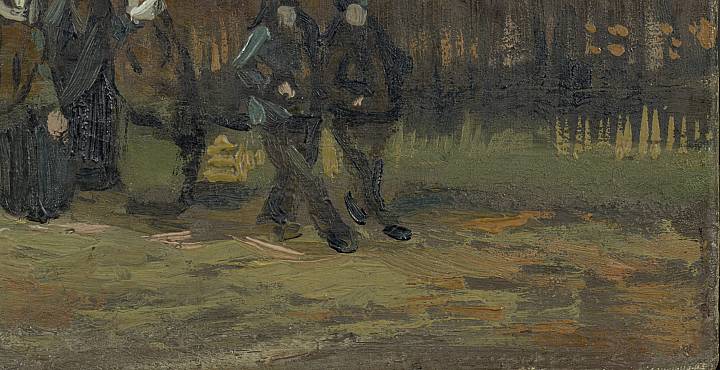
Detail: he brightened up the path in the foreground with strokes of lighter paint, in green, pink and orange.
